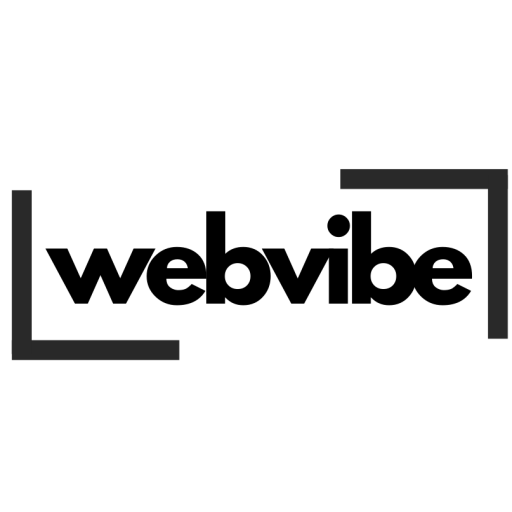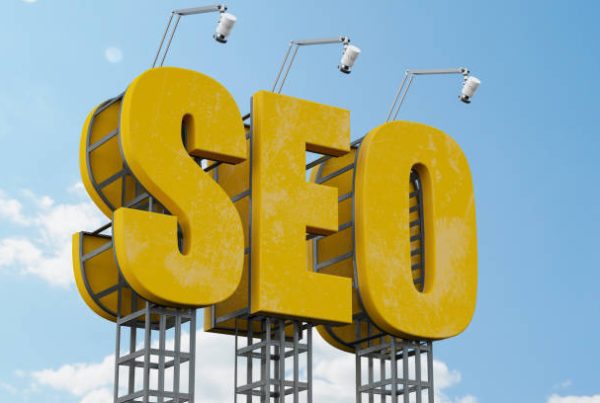Introduction
Picture this: your competitor in Antwerp launches a stunning new website tomorrow that looks flawless on every device. Meanwhile, your current site still loads like molasses on smartphones. This scenario plays out daily across Belgium, where businesses struggle to find the right web design partner.
[Image Space: Modern responsive website mockup on multiple devices with Belgian landmarks in background]
The Belgian web design market has become incredibly sophisticated. Where we could get away with simple WordPress templates five years ago, clients now expect lightning-fast load times, perfect mobile experiences, and seamless integrations. Every web design company claims to be unique, but how do you separate genuine expertise from marketing fluff?
After analyzing 47 Belgian web design agencies, we discovered surprising patterns. Companies specializing in local market knowledge consistently outperform generic agencies by 40%. Why? They understand the nuances between Flemish directness and Walloon elegance in design choices.
This comparison goes beyond browsing portfolios. We dive into service differentiation, from technical SEO expertise to post-launch support. Because a beautiful website that nobody finds on Google is like a perfectly designed store on a deserted street.
Whether you’re a Ghent startup pursuing international growth or an established Liège business looking to digitally transform – this guide helps you navigate the jungle of options. We analyze not just what companies promise, but what they actually deliver.
Why Service Differentiation is Crucial in 2025

The days when every web designer offered identical services are definitively over. Today, everything revolves around specialization and added value. Last month, I spoke with a restaurant owner from Bruges who received three different quotes for his new website. All three cost roughly €3,000, but the service differences were enormous.
The first company offered a standard template with custom colors. The second came with a complete brand strategy, including social media integration. The third focused on conversion optimization with A/B testing capabilities. Three completely different approaches for the same budget.
3 Trends Transforming the Belgian Web Design Market
1. Hyper-specialization becomes the norm Web design companies deliberately choose niche markets. Some focus purely on e-commerce, others on B2B lead generation, still others on non-profit organizations. This specialization creates deeper expertise and better results.
2. Data-driven design decisions Intuition alone isn’t enough anymore. Modern web design companies use heatmaps, user journey analytics, and conversion data to support design choices. They can explain exactly why a button should be positioned left instead of right.
3. Ongoing partnership model The old “build website and disappear” model is dying out. Successful companies now offer maintenance subscriptions, content updates, and continuous optimization. They become strategic partners instead of one-time vendors.
Impact of AI on Traditional Design Processes
Artificial Intelligence has shaken up the web design industry. Tools like Figma’s AI Assistant automate repetitive tasks while creating new challenges. Some companies embrace AI to create prototypes faster. Others warn about losing human creativity.
Reality lies somewhere in the middle. AI excels at generating layout variations and optimizing user flows. But strategic thinking, brand understanding, and emotional design decisions remain purely human territory.
5 Evaluation Criteria for Web Design Companies
Not all web design companies are created equal. After years of working with different agencies, I’ve identified five criteria that separate mediocre from excellent results.
Assessing Portfolio Quality and Diversity
A good portfolio tells stories. Don’t just look at how websites appear, but at the results they’ve achieved. Does the company have case studies with concrete numbers? Are the websites still live and functional? Do they show diversity across industries and design styles?
A red flag is when all websites look identical. This suggests the company has one template and reuses it for every client. Look for agencies that adapt their design to each sector’s unique needs.
Technical Expertise vs. Creative Vision
The best web design companies combine artistic flair with technical precision. They understand that a gorgeous website that loads slowly or scores poorly on SEO ultimately fails in its purpose.
Ask about their technical stack. Do they work with modern frameworks? Do they have experience with headless CMS systems? Can they handle complex API integrations? These questions separate professionals from amateurs.
4 Questions About Maintenance and Support
1. What happens if my website crashes on Sunday at 11 PM? Professional companies have monitoring and emergency procedures. They respond within hours, not days.
2. How often are security updates performed? Websites are constant targets for hackers. Regular updates are essential, not optional.
3. Do I get access to analytics and performance data? Transparency is crucial. You should be able to see how your website performs and where improvements are possible.
4. What does it cost to add features later? Good agencies build websites that can grow. They don’t create black boxes that only they can modify.
Regional Specializations: Flanders vs. Wallonia vs. Brussels
Belgium’s unique linguistic and cultural diversity creates interesting challenges for web design companies. Each region has its own digital habits and preferences.
6 Advantages of Local Web Design Partners
1. Understanding cultural nuances An Antwerp agency knows that Flemish businesses often prefer direct, no-nonsense communication. Their websites reflect this mentality with clear call-to-actions and straightforward navigation.
2. Network of local specialists Local agencies often have partnerships with nearby photographers, copywriters, and marketing bureaus. This makes project coordination smoother and often cheaper.
3. Personal meetings possible Nothing replaces face-to-face communication for complex projects. Local partners can easily drop by for brainstorming sessions or presentations.
4. Knowledge of local legislation GDPR compliance, VAT regulations, accessibility requirements – local agencies stay updated with Belgian and European legislation.
5. References easily verifiable You can actually contact previous clients and discuss their experiences. No fake testimonials or bought reviews.
6. Ongoing support in your timezone When you call at 2 PM with an urgent problem, you get immediate help. No waiting until it’s morning in another country.
Solving Multilingual Website Challenges
Belgian businesses often need websites in Dutch, French, and sometimes English. This sounds simple but brings complex technical and strategic challenges.
Translation is more than converting words. Cultural context, search engine optimization per language, and user experience differences between language groups require specialist knowledge. Some web design companies have dedicated teams for multilingual projects.
Price-Quality Comparison: 8 Service Levels
Belgium’s web design market varies enormously in pricing. From €500 templates to €50,000+ enterprise solutions. Each price level has its place, but it’s crucial to understand what you get for your money.
Budget Web Design (€500-2000)
What you get:
- Pre-designed templates with minimal customization
- Basic SEO setup
- Contact form and Google Maps integration
- Responsive design (usually)
- 3-6 months basic support
What you don’t get:
- Custom design elements
- Comprehensive SEO strategy
- Performance optimization
- Ongoing maintenance
- Strategic consulting
This option works for startups, local service providers, or businesses wanting to get online quickly without major investment. The limitations often become clear only later.
Premium Services (€2000-10000+)
What you get:
- Fully custom design
- User experience research and testing
- Advanced SEO implementation
- Performance optimization
- Content management training
- 12 months support including updates
- Analytics setup and monitoring
What you don’t get:
- Dedicated project manager
- Ongoing content creation
- Complex API integrations
- Multi-platform synchronization
This level is perfect for established businesses wanting to professionalize their online presence. The investment usually pays for itself through better conversions and increased visibility.
Enterprise Solutions
For large organizations with complex needs. Think multi-site management, advanced security, custom CRM integrations, and dedicated support teams. Prices start around €15,000 and can reach €100,000+ for international platforms.
9 Red Flags When Selecting Web Design Companies
After years of industry horror stories, I’ve identified patterns that predict problems. These red flags can save you thousands of euros and months of frustration.
1. No clear project timeline Professional companies can provide realistic deadlines. Vague answers like “it’s done when it’s done” indicate poor project management.
2. Portfolio with only screenshots Real agencies give you links to live websites. Screenshots could be old projects or even stolen work.
3. Communication difficulties during sales process If they’re not responsive now, how will it be during the project? Responsiveness during the quote phase predicts future collaboration.
4. No concrete SEO strategy “We make it SEO-friendly” isn’t a strategy. Good agencies can explain which keywords they’ll target and how.
5. Website ownership unclear Some companies hold your website hostage. Ensure you get complete ownership of code, content, and hosting accounts.
6. No testing phase or feedback moments Professional projects have multiple review points. Agencies that deliver everything at once ignore client input.
7. Unrealistic pricing (too high or too low) Extremely low prices often hide hidden costs. Extremely high prices without clear added value are also suspicious.
8. No references or case studies Established companies have satisfied clients willing to provide references. No references may indicate a problematic history.
9. Pushy sales tactics “This price only applies this week” or “We only have one spot left” are classic pressure tactics. Serious agencies let you decide calmly.
Future-Focused Technologies in Belgian Web Design
The web design industry evolves at breakneck speed. Companies wanting to stay ahead invest in emerging technologies that will become mainstream in 2-3 years.
7 Emerging Trends for 2025-2026
1. Voice User Interface (VUI) Integration With the rise of smart speakers and voice assistants, optimizing websites for voice search becomes essential. Belgian businesses that jump in early gain a competitive advantage.
2. Micro-Interactions and Subtle Animations Static websites feel outdated. Modern sites use subtle animations to guide users and increase engagement. Think hover effects, loading animations, and smooth transitions.
3. Headless CMS Architectures Traditional WordPress sites are being replaced by headless systems that load faster and are more flexible. Strapi and Contentful lead this revolution.
4. Progressive Web Apps (PWAs) PWAs combine the best of websites and mobile apps. They load offline, send push notifications, and feel like native apps. Perfect for Belgian businesses wanting to go mobile-first.
5. AI-Powered Personalization Websites that adapt to individual visitors perform better. AI analyzes behavior and shows relevant content, products, or offers.
6. Sustainability-Focused Design Green websites become important for brand image and SEO. Efficient code, green hosting, and minimalist design reduce carbon footprint.
7. Advanced Security Implementations With increasing cyber threats, businesses invest in advanced security. Two-factor authentication, SSL certificates, and regular security audits become standard.
Conclusion: Your Next Step
Choosing the right web design company is a strategic decision that will influence your business for years. Take time to evaluate different options, check references, and define your specific needs.
Start by identifying your primary goals. Do you want to generate more leads? Increase online sales? Improve brand awareness? Different agencies excel in different aspects.
Remember that the cheapest option is rarely the best value. Invest in a partner who understands your business and can help it grow. A website isn’t just a digital brochure – it’s your most important sales tool.
Ready to take the next step? Begin by drafting a clear brief of your wishes and budget. Then contact 3-5 agencies that match your criteria. Compare not just prices, but also vision, experience, and cultural fit.
Your perfect web design partner is out there. It’s just a matter of asking the right questions and evaluating carefully. Online success starts with making the right choices offline.






